Opinion: Protecting a Piece of Md. History From the State’s Beltway Expansion Plan
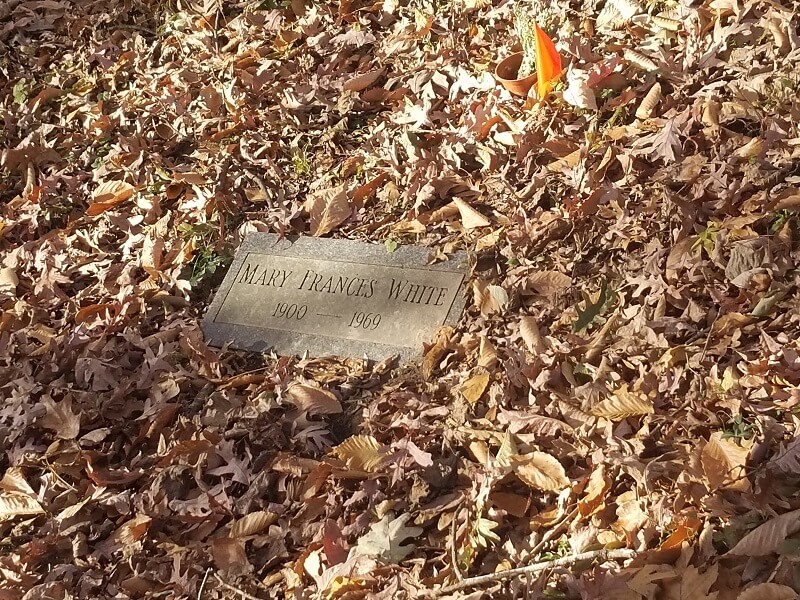
After the end of the Reconstruction (1865–1877), the rise of segregation led to a large disparity between white and Black communities, and many Black communities did not have adequate infrastructure for things such as schools and cemeteries. To address their needs, they began forming benevolent societies and fraternal organizations funded by member dues.
The societies acted as insurance agencies providing payments to families during illness and upon the death of loved ones, and provided for burials. The societies were a source of social support and community cohesion.
In 1880, the Gibson Grove community in Cabin John was established by Sarah and Robert Gibson, who had previously been enslaved on a plantation in Virginia. They bought property, but were forced to live on the outskirts of white society. In 1882, they helped establish the first schools for Black children in the area. In 1885, they helped establish the first Order of Moses benevolent society in Montgomery County, the Morningstar Tabernacle No. 88 of the Ancient United Order of Sons and Daughters, Brothers and Sisters of Moses to serve the community.
The two-story Moses Hall lodge was located adjacent to the cemetery. Thirteen years later, the Gibson Grove AME Zion Church was built on land Sarah Gibson donated and served the 10 neighboring Black families and growing community.
The story of Sarah Gibson’s escape from slavery and life is an inspiration. Now the two anchoring sites of this early successful Black community named for her are in peril. They were damaged 60 years ago when the Capital Beltway divided them and are severely under threat again today from plans to expand the same highway by an additional four lanes.
Beltway splits the Gibson Grove community
In 1960, when the Capital Beltway was constructed, the Gibson Grove community was split in half, with the cemetery and hall ending up on one side of the Beltway, and the church on the other side. Although the cemetery is not in active use today, one of the most recent burials dates to 1977. Gibson Grove remained an active community even after being devastated by the creation of the Beltway. Many marginalized communities were ruined by the addition of highways and freeways throughout the 20th century, creating some of the darkest times in American urban planning.
What’s worse is that the community could once again be devastated by the Beltway.
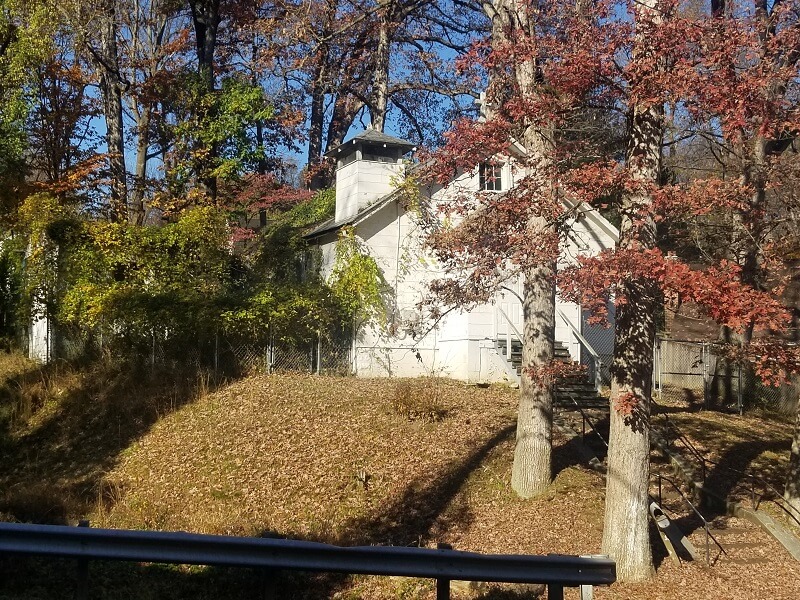
Gibson Grove Church in Cabin John today. In 1960, when the Capital Beltway was constructed, the Gibson Grove community was split in half, with the church on one side of the Beltway and its cemetery ending up on the other. Photo by Chandler Louden.
In July 2020, the Federal Highway Administration and the Maryland Department of Transportation released a report that detailed plans for the addition of private sector toll lanes on the Capital Beltway (I-495). Elected officials, technical experts and community leaders have spoken out on the threat that Gov. Larry Hogan’s I-495/I-270 expansion presents, including the Sierra Club and 50 other groups who state that the plan is flawed, not in the public interest, and too damaging to air quality, water quality, parklands, and historical and cultural resources.
The Morningstar Tabernacle No. 88 Cemetery sits on the edge of I-495 in Cabin John. The state’s right of way borders the foundation of the original Moses Hall lodge and numerous graves. Expansion of the Beltway risks disturbing graves and destroying the hall foundation and a significant portion of the cemetery.
Concerned citizens mobilize to protect the cemetery and hall
Fortunately, a collective of concerned citizens has organized to make a stand.
In 2018, the state released its I-495 and I-270 Managed Lanes Study maps to the public online. The Morningstar Tabernacle No. 88 cemetery was not designated as a burial site nor was it designated as a historic location. Locals noticed this.
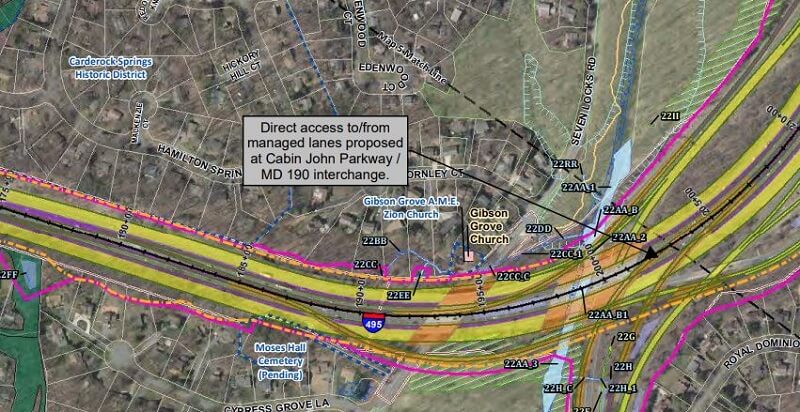
Maryland State Highway Administration I-495/I-270 Managed Lanes Study draft map.
The initial public draft of the Cultural Resources Technical Report largely misrepresented the Morningstar cemetery property. This proved to be alarming to many in the Cabin John, Carderock and Gibson Grove Church communities. The Cabin John Citizens Association has been engaged in trying to maintain and bring attention to the historical significance of the Morningstar Tabernacle No. 88 cemetery for decades, but the state’s expansion project prompted calls for a larger and more concerted effort to protect the site.
Word began to spread about potential threats to the Morningstar cemetery and Gibson Grove church. Community leaders and descendants of those buried in the cemetery held meetings and organized volunteer cleanups at the site. The advocacy group that is now known as The Friends of Moses Hall began to come together in 2019 and began to coalesce around the urgency and engagement of the Managed Lanes Study and NHPA Section 106 process in early 2020.
The Friends of Moses Hall membership has grown and includes descendants of Morningstar Tabernacle No. 88, Gibson Grove AME Zion Church members, Gibson Grove Church leaders and community leaders including experts in archaeology, historic preservation and research. A small, but dedicated group of stakeholders and volunteers, the Friends have succeeded in building public awareness and rallying support for its efforts.
The current plan for the Beltway expansion was approved by the Board of Public Works back in January 2020. One of the aspects of the new plans was to have a more formal process to work with local communities. Despite this, dozens of environmental advocacy organizations and groups of concerned citizens have voiced their concerns including the Sierra Club.
In a document responding to the comments on I-495 and I-270 Managed Lanes Study Draft Environmental Impact Statement, the Sierra Club and Rock Creek Conservatory found that the DEIS was structured to hide the damage that the project will have on communities.
One of the most alarming aspects of the project is the withholding and redaction of information. Last August, 34 environmental groups called for an extension of the project’s Draft Environmental Impact Statement comment period as they believe changes were made without the public’s knowledge. Critics also pointed out that the idea of public transit is omitted from the retained alternatives.
The community around Gibson Grove has come together to protect a precious piece of Maryland history. I got a chance to visit the cemetery and talk to some of the people involved with protecting it. Eileen McGuckian, a historian and preservationist who is also a member of the Friends of Moses Hall, and I discussed the importance of historic places. “We know how to orient ourselves to our world, and these historic places give us sort of the vortex for changing perceptions of history and memory, and even for beauty,” she said.
Diane Baxter is a great-granddaughter of James Coates (d. 1894), one of the first known burials in the Tabernacle No. 88 Cemetery. Baxter recently learned that her great grandmother is also buried in the cemetery, which contains an estimated 70 graves and the foundation of the county’s only remaining Moses Hall.
She observes: “You can’t mitigate removing a burial. You can’t mitigate removing your grandparents’ or your mother’s grave. How do you do that when this is an area that was dedicated and preserved and fought for to be a family community?”
Baxter opposes “any planned highway construction that would further desecrate and damage the Morningstar Moses Cemetery/Hall, an important cultural and historic African American resource.”

Chandler Louden
One of the few pieces of architecture that still stands from the Gibson Grove community is the Gibson Grove church on the other side of the highway. “It is in dire need of repair,” archaeologist Dr. Alexandra Jones told me. She did extensive research on the church and Gibson Grove, and when we spoke in October 2020 she also said: “It’s so unfortunate that a piece of Maryland history is a risk of destruction and a plan put forth by Maryland’s government will only make things worse.”
Historical places have a value that is immeasurable. They create a sense of space and time. Historic places provide a sense of authenticity to their communities and a record of material heritage. The Morningstar Tabernacle No. 88 Cemetery and Gibson Grove church are valuable not just to the descendants of the people who lived in the community, but for the residents of Cabin John and Montgomery County, and even beyond as “not only important spiritual monuments for families but also gateways into the people, places and events that shaped our nation.”
Latest developments and how to help
In December 2020, the state sped up its procurement process while the environmental review process was delayed, making the processes not concurrent and further out of sync. Undeterred, the state rearranged the processes with plans to go forward with a binding contract with the developer by the end of May, before the Final Environmental Impact Statement and Record of Decision are completed, before receiving concurrence from federal agencies, and before there have been public hearings on toll rates. The public sector, the counties and communities which will be ripped up by these new private toll lanes, meanwhile, received only a nonbinding fact sheet with commitments that are subject to change.
A new bill (Senate Bill 960/House Bill 1373) could provide a mechanism to protect these and other similar sites in the path of highway toll lanes for private sector profit. Please call and send messages to the members of the reviewing committees and your senator and delegates now to ask them to support racial justice and SB960/HB1373 in particular.
Please also write Comptroller Peter V.R. Franchot and the other Board of Public Works members (Gov. Hogan and Treasurer Nancy Kopp) to insist they not OK the developer “predevelopment” contract until the environmental review process has been completed.
What else can we do to help out? We can learn more about this important history by watching this video and visiting the Friends of Moses Hall’s website and its many resources for further information. We can also continue to question the I-495/I-270 for-profit toll lanes and any rushed, multibillion-dollar proposals that significantly harm our communities and important cultural, historic and environmental resources.
At the heart of it, we can each pitch in by valuing and working to protect our historic places for generations to come.
–CHANDLER LOUDEN
The writer is a senior at the University of Maryland Baltimore County and a McNair scholar with an anthropology and history double major.


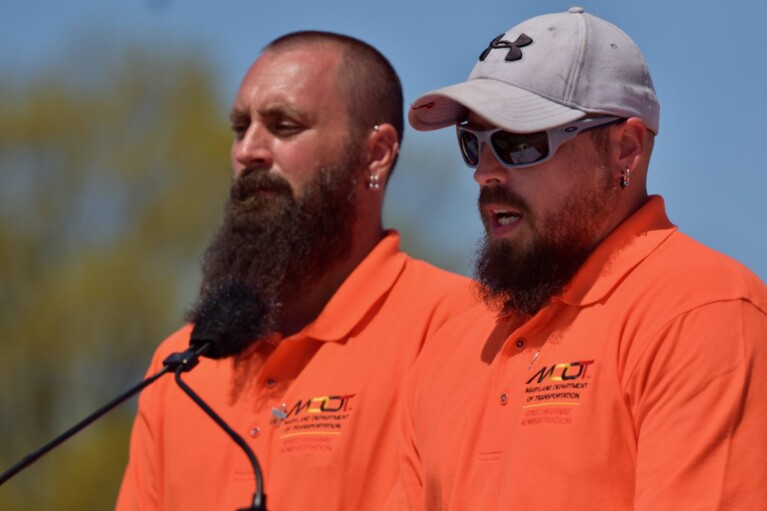
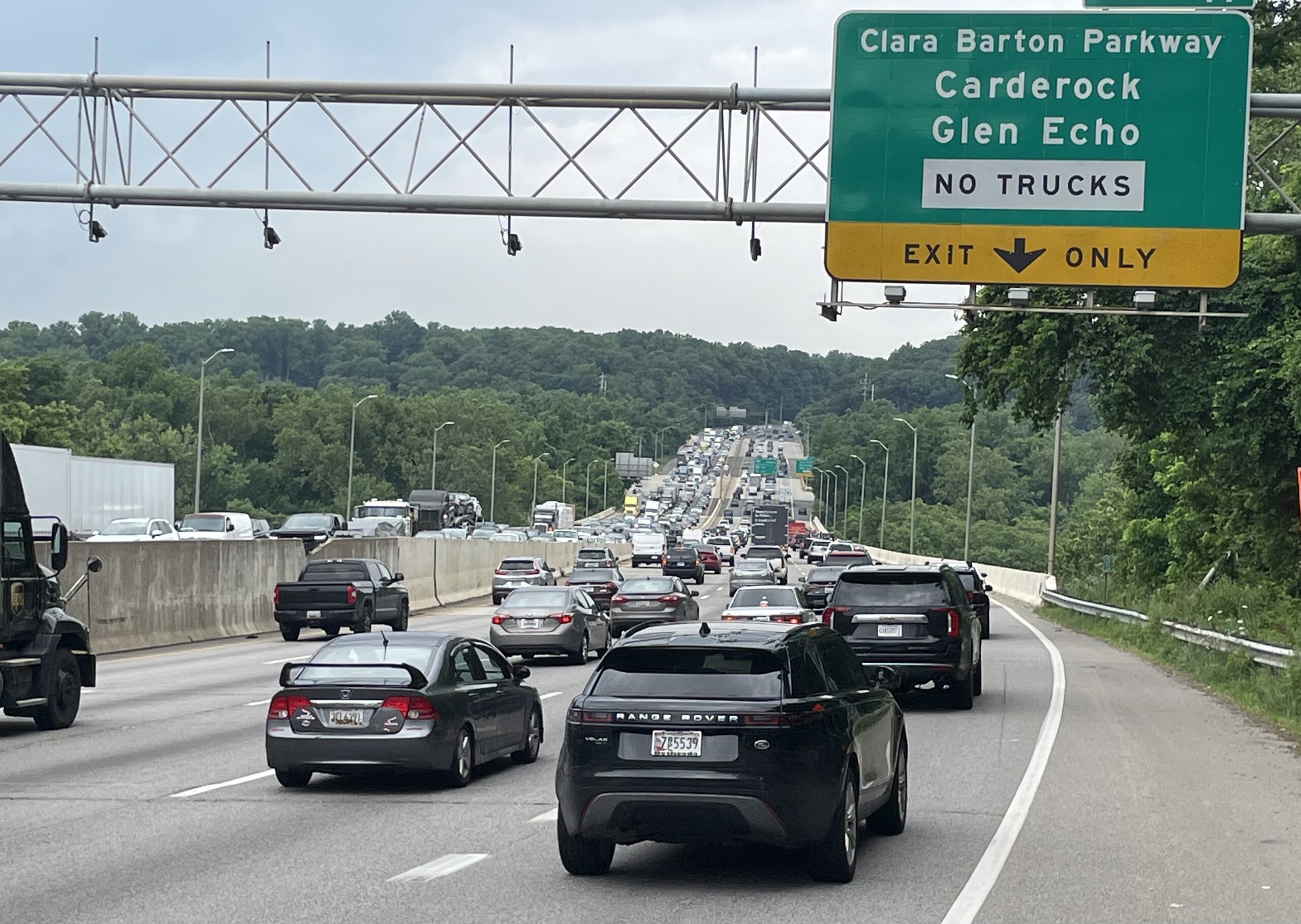
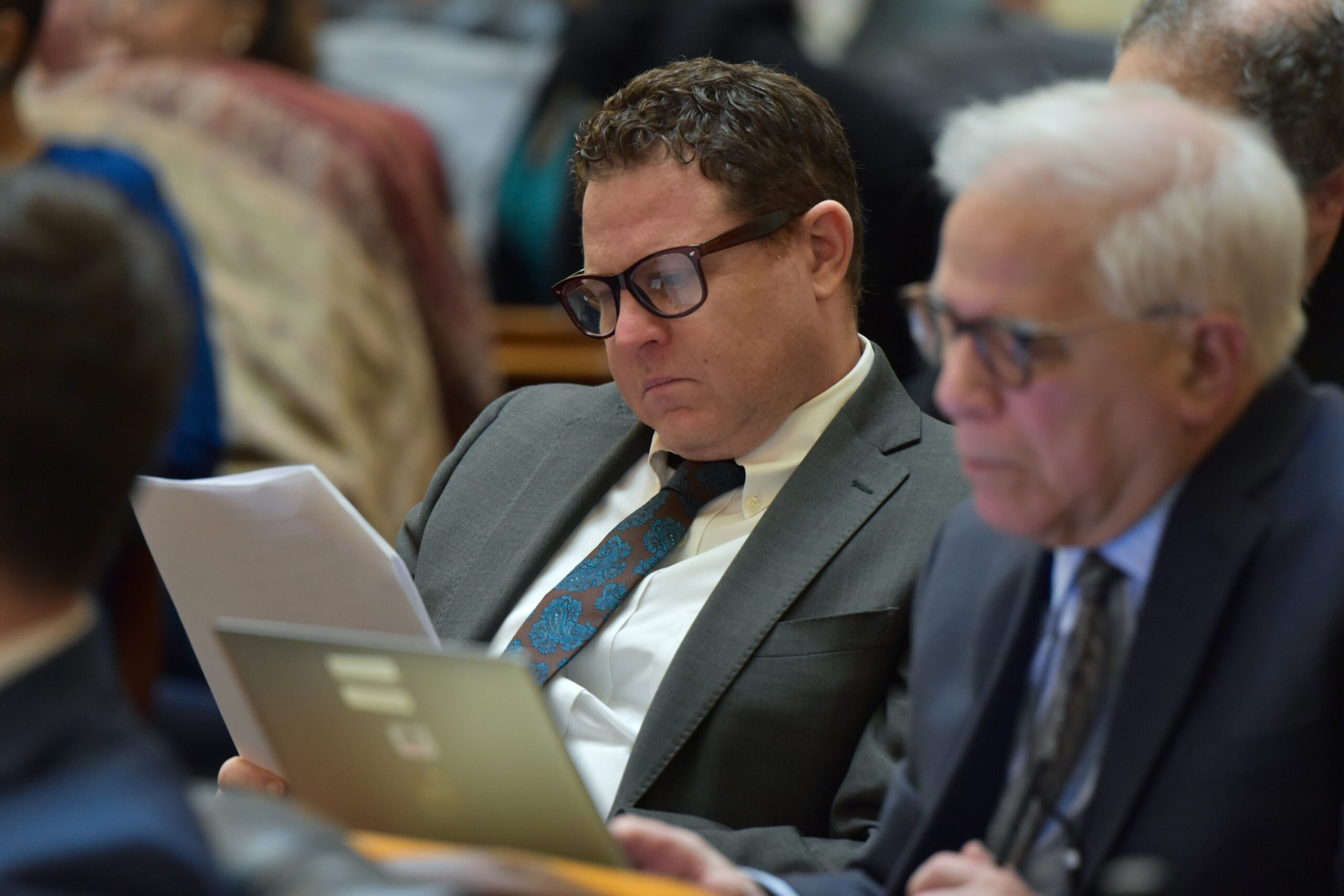
 Creative Commons Attribution
Creative Commons Attribution